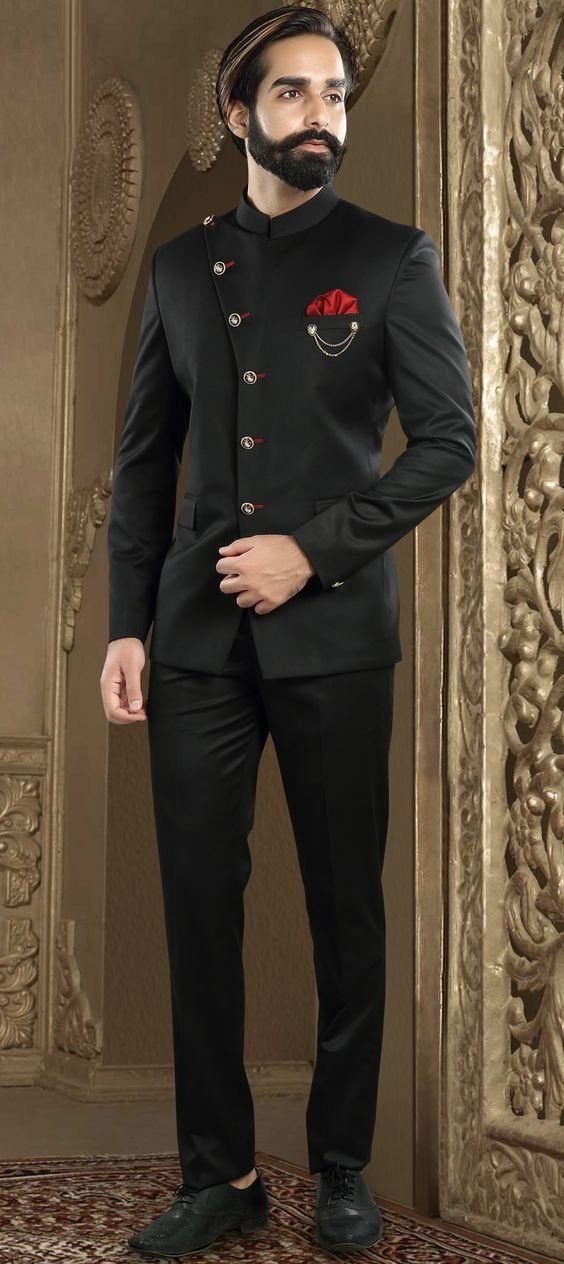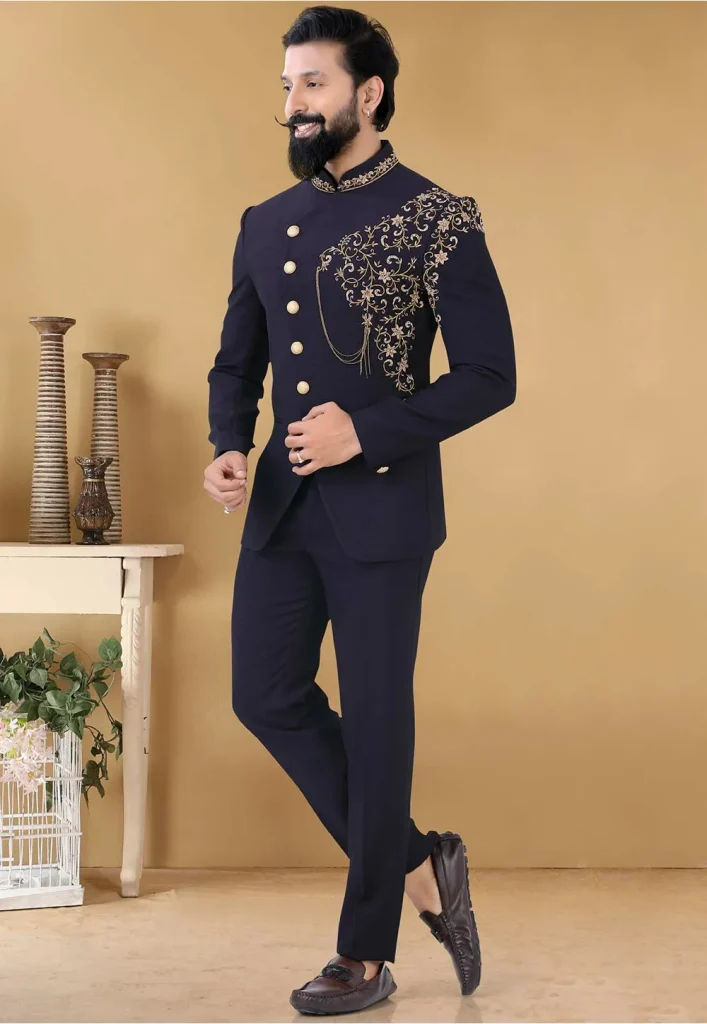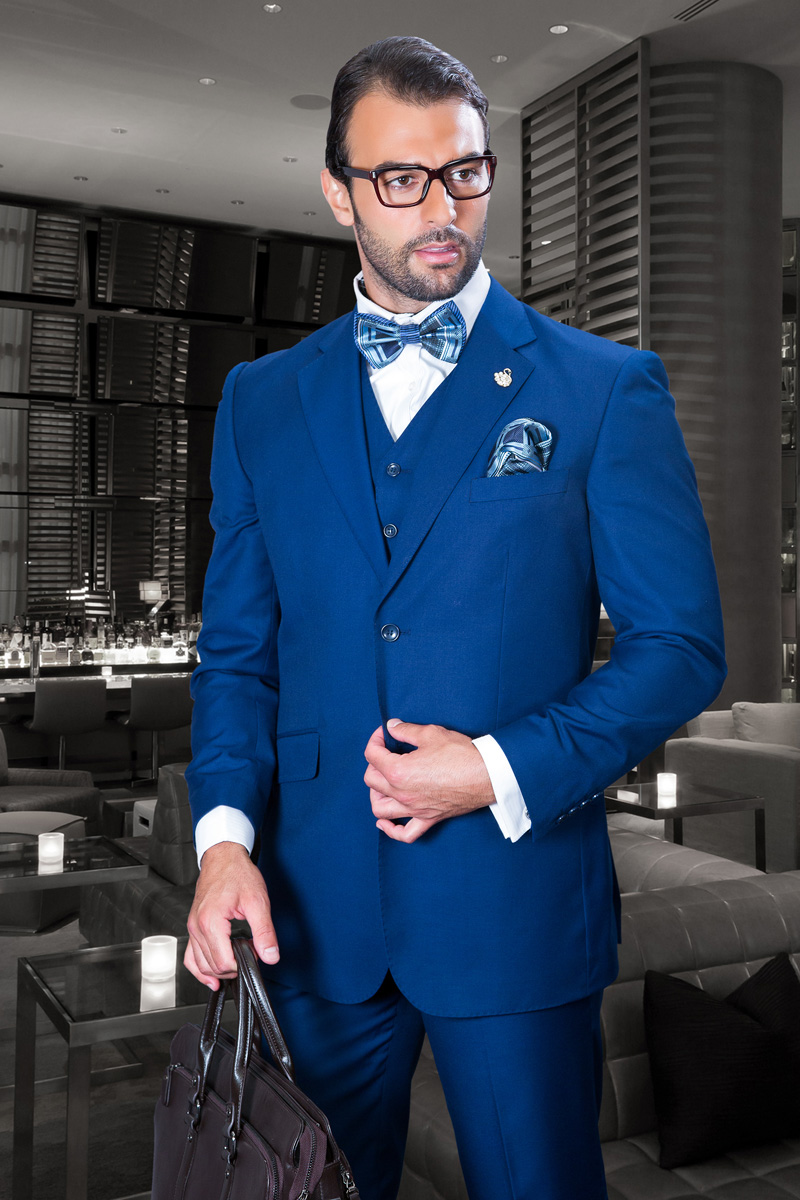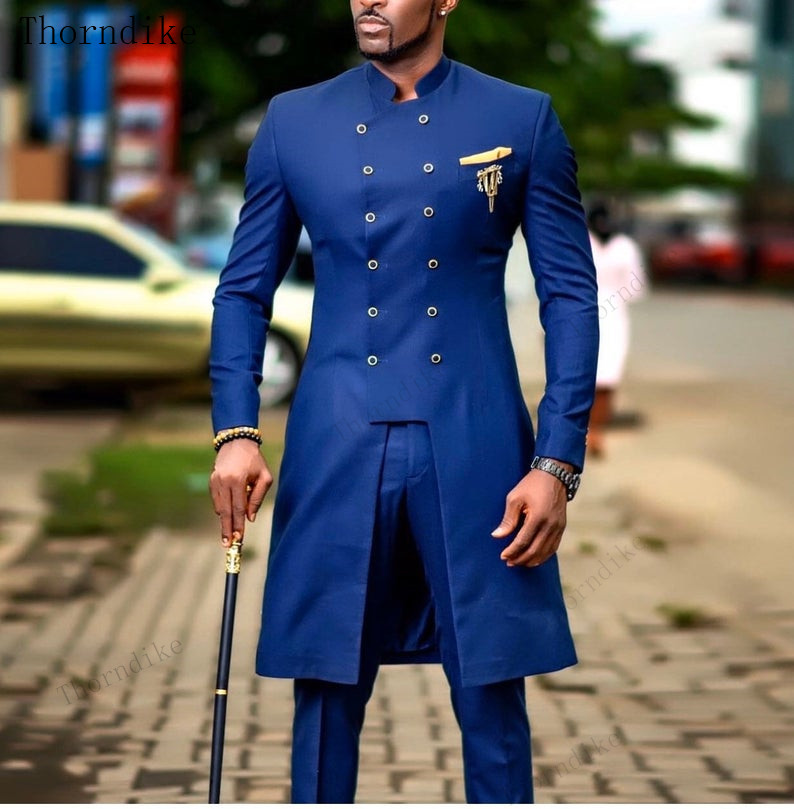Indian suits for men, also known as traditional Indian attire or ethnic wear, encompass a rich tapestry of styles, fabrics, and embellishments that reflect the cultural diversity and heritage of India. From the regal elegance of sherwanis to the effortless charm of kurta pajamas, Indian suits offer a plethora of options for men seeking sartorial refinement and cultural authenticity. In this comprehensive guide, we’ll delve into the various styles of Indian suits for men, exploring their distinct characteristics, historical significance, and modern adaptations.

Sherwani: The Epitome of Regal Elegance
- Origin and History: The sherwani traces its origins back to the Mughal era, where it was favored by nobility and royalty for its opulent design and majestic silhouette.
- Silhouette: Characterized by its long, fitted coat with a Nehru collar and intricate embellishments, the sherwani exudes regal elegance and sophistication.
- Fabrics: Sherwanis are crafted from luxurious fabrics such as silk, brocade, and velvet, adorned with intricate embroidery, zardozi work, and embellishments like beads, sequins, and stones.
- Occasions: Sherwanis are typically worn on special occasions such as weddings, receptions, and festive celebrations, making them a symbol of grandeur and prestige in Indian culture.
Kurta Pajama: Effortless Charm with Cultural Roots
- Traditional Attire: The kurta pajama is a quintessential Indian ensemble consisting of a long tunic (kurta) paired with loose-fitting trousers (pajama) or churidar.
- Comfort and Versatility: Kurta pajamas are prized for their comfort and versatility, offering effortless charm and ease of movement for various occasions.
- Fabrics and Embellishments: Kurta pajamas are crafted from a wide range of fabrics including cotton, silk, linen, and blends, embellished with traditional techniques such as embroidery, block printing, and hand-painted motifs.
- Occasions: Kurta pajamas are suitable for both formal and casual occasions, ranging from weddings and festivals to religious ceremonies and social gatherings.
Nehru Jacket: Fusion of Tradition and Modernity
- Inspired Design: The Nehru jacket draws inspiration from the traditional achkan worn by Indian statesman Jawaharlal Nehru, featuring a mandarin collar and a buttoned front.
- Contemporary Appeal: Nehru jackets have evolved into a versatile garment that can be worn with kurta pajamas, sherwanis, or Western attire, adding a touch of sophistication and refinement to any ensemble.
- Fabrics and Embellishments: Nehru jackets come in a variety of fabrics including silk, cotton, linen, and velvet, embellished with embroidery, jacquard weaving, or intricate handcrafted details.
- Occasions: Nehru jackets are suitable for both formal and semi-formal occasions, offering a stylish alternative to traditional blazers or designer suits for weddings, receptions, and cultural events.

Bandhgala Suit: Fusion of Heritage and Modernity
- Traditional Silhouette: The bandhgala suit, also known as the Jodhpuri suit, features a closed-neck jacket with a Mandarin collar and buttoned front, paired with tailored trousers.
- Royal Heritage: The bandhgala suit has its roots in Indian royalty, particularly in the princely state of Jodhpur, where it was favored by aristocracy for its understated elegance and impeccable tailoring.
- Contemporary Adaptations: Modern easter suits are characterized by slim cuts, contemporary fabrics, and minimalist embellishments, making them suitable for a wide range of formal and semi-formal occasions.
- Occasions: Bandhgala suits are a popular choice for weddings, receptions, formal dinners, and cultural events, offering a sophisticated yet distinctive alternative to Western suits.
Pathani Suit: Icon of Masculine Elegance
- Traditional Attire: The Pathani suit, also known as the Afghani suit or Khan suit, is characterized by its long tunic with a Mandarin collar and straight-cut trousers.
- Masculine Appeal: Pathani suits exude an aura of rugged masculinity, with their simple yet elegant design and emphasis on functionality and comfort.
- Fabrics and Embellishments: Pathani suits are typically crafted from breathable fabrics such as cotton, linen, or silk, featuring minimal embellishments or intricate embroidery along the collar, placket, and cuffs.
- Occasions: Pathani suits are worn for both formal and casual occasions, ranging from weddings and festivals to everyday wear, offering a versatile option for men seeking a blend of style and practicality.

Indo-Western Fusion: Embracing Contemporary Trends
- Blend of Cultures: Indo-Western outfits combine elements of traditional Indian attire with Western silhouettes, fabrics, and styling techniques, resulting in a fusion of cultures and aesthetics.
- Contemporary Designs: Indo-Western ensembles for men often feature innovative cuts, asymmetric hemlines, unconventional fabrics, and bold embellishments, catering to modern tastes and sensibilities.
- Versatility: Indo-Western outfits can be styled for a variety of occasions, from weddings and cocktail parties to red carpet events and fashion shows, offering a fresh and dynamic interpretation of Indian menswear.
Advantages of indian suits for men
Indian suits for men, with their rich heritage, intricate craftsmanship, and timeless elegance, hold a special place in the world of fashion. From the majestic sherwanis to the versatile kurta pajamas, these traditional ensembles offer a myriad of advantages beyond mere aesthetics.
-
Cultural Significance and Heritage Preservation:
- Indian suits are deeply rooted in the cultural heritage of India, representing centuries-old traditions and customs passed down through generations.
- By wearing unique suits, men not only pay homage to their cultural roots but also contribute to the preservation and promotion of indigenous craftsmanship and artistry.
- These garments serve as a visual reminder of India’s diverse cultural tapestry, showcasing the country’s rich history, regional variations, and artisanal techniques to the world.
-
Symbol of Prestige and Tradition:
- Indian suits, particularly sherwanis, are often associated with prestige, nobility, and regal elegance, making them the attire of choice for special occasions and ceremonial events.
- Wearing traditional Indian attire signifies adherence to cultural norms and values, reflecting a sense of pride in one’s heritage and identity.
- In many Indian communities, the choice of attire for significant milestones such as weddings, festivals, and religious ceremonies is imbued with deep symbolic meaning, signifying auspiciousness, prosperity, and familial bonds.

-
Versatility in Styling and Occasions:
- One of the key advantages of Indian suits is their versatility, as they can be styled to suit a wide range of occasions and preferences.
- Sherwanis, kurta pajamas, Nehru jackets, and bandhgala suits offer varying degrees of formality, allowing men to choose attire that complements the ambiance and dress code of different events.
- From opulent weddings and grand receptions to casual gatherings and festive celebrations, Indian suits provide men with an array of options to express their personal style while adhering to cultural norms and social conventions.
Conclusion:
Indian suits for men encompass a diverse array of styles, fabrics, and embellishments that reflect the rich cultural heritage and sartorial traditions of India. From the regal elegance of sherwanis to the effortless charm of kurta pajamas, each ensemble embodies a unique blend of craftsmanship, history, and contemporary style. Whether worn for weddings, festivals, or everyday wear, Indian suits offer men an opportunity to showcase their cultural pride and personal style with grace and sophistication.

